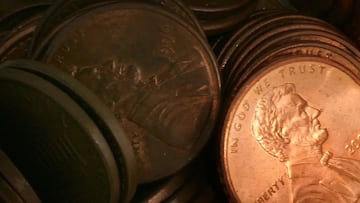MONEY
One-cent coins that could be worth up to $30,000: How can you tell if you have one?
There are one-cent coins that might fetch up to $30,000. Here’s how to find out if you possess one of these rare pennies.

Most circulating coins and bills are only worth their face value, meaning a one-cent coin is typically just worth one cent, and so on and so forth. However, certain specimens can sell for thousands of dollars to collectors if they have errors and are in good condition.
According to US First Exchange, the value of a coin or bill is determined by three main factors: rarity, condition or grade, and market conditions, meaning demand. The interplay of these factors decides the final actual value of a rare coin or bill.
Here’s what the one-cent coin worth up to $30,000 looks like
The ‘1982-D Lincoln Penny’ is one of the rare coins that could be worth thousands of dollars. There are two main reasons: the numbers on it have unique characteristics, and it is predominantly made of bronze with a smaller amount of zinc. Valuations have been put in a range from around $10,000 to $30,000.
According to COINage Magazine, this Lincoln cent had been discussed as a rumor for a long time, but its existence was not confirmed until the first specimen appeared in 2016.
Check the weight of your coin
Because more than 90% of this rare coin is made of bronze, with the remainder zinc, it tends to be heavier than standard pennies. The 1982-D Lincoln Penny weighs about 3.1 grams, compared to 2.5 grams for the version made entirely of zinc.
The 1982-D Lincoln Penny has smaller numbers
Besides the materials used in its creation, a key characteristic of this valuable cent is the date, which features smaller numbers than usual.
COINage Magazine notes that the top of the numbers in the date end at different heights. What is more, the “2″ in the small date is more curved than in the large date. The magazine notes these coins can be found in regular circulation.





